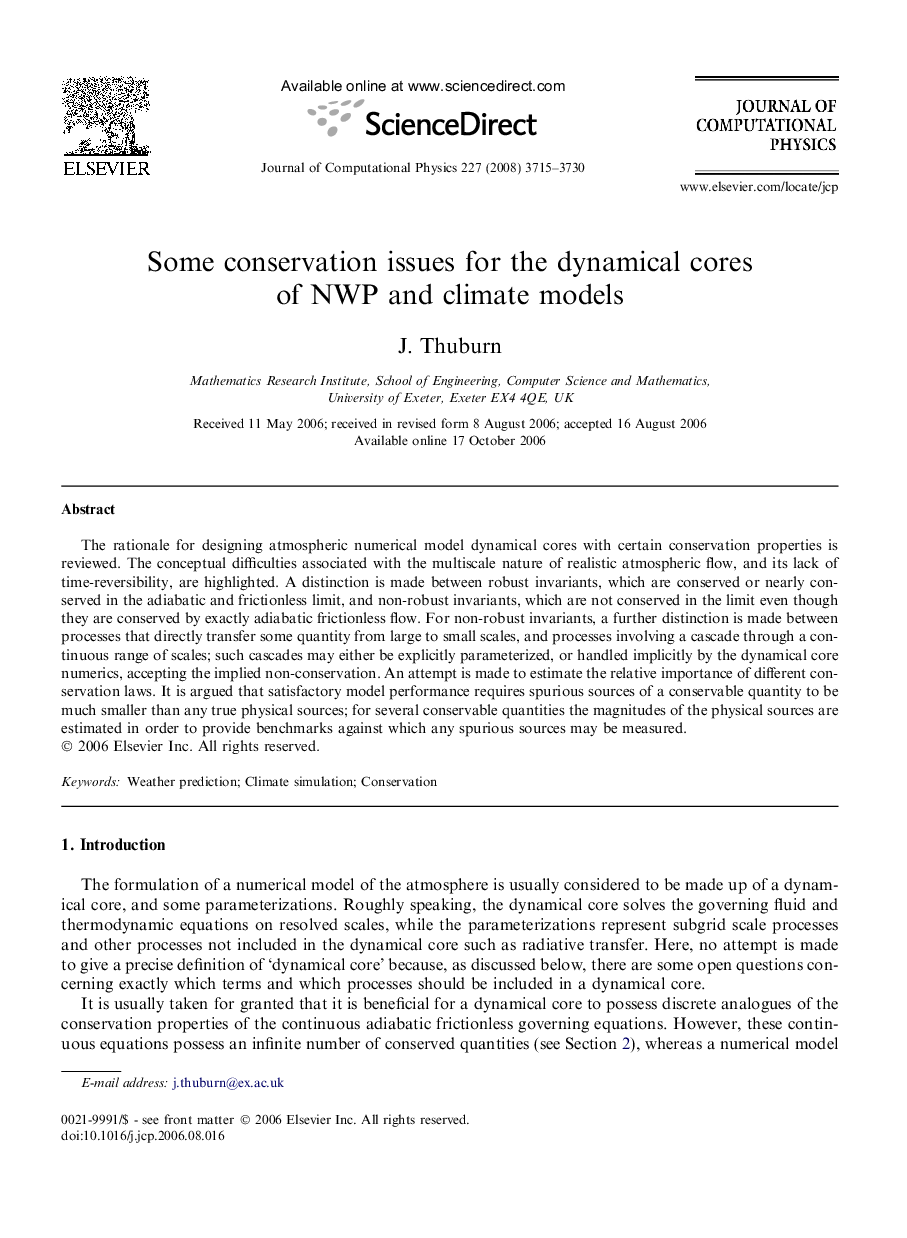| Article ID | Journal | Published Year | Pages | File Type |
|---|---|---|---|---|
| 522831 | Journal of Computational Physics | 2008 | 16 Pages |
The rationale for designing atmospheric numerical model dynamical cores with certain conservation properties is reviewed. The conceptual difficulties associated with the multiscale nature of realistic atmospheric flow, and its lack of time-reversibility, are highlighted. A distinction is made between robust invariants, which are conserved or nearly conserved in the adiabatic and frictionless limit, and non-robust invariants, which are not conserved in the limit even though they are conserved by exactly adiabatic frictionless flow. For non-robust invariants, a further distinction is made between processes that directly transfer some quantity from large to small scales, and processes involving a cascade through a continuous range of scales; such cascades may either be explicitly parameterized, or handled implicitly by the dynamical core numerics, accepting the implied non-conservation. An attempt is made to estimate the relative importance of different conservation laws. It is argued that satisfactory model performance requires spurious sources of a conservable quantity to be much smaller than any true physical sources; for several conservable quantities the magnitudes of the physical sources are estimated in order to provide benchmarks against which any spurious sources may be measured.
